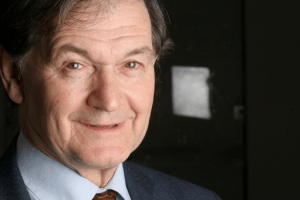
Robert J. Marks looks at a recent theory:
One issue to be aware of is this: AI is performed by computers and computers are entirely algorithmic. That is to say, they are constrained to obey a set of operations written by a computer programmer. Mathematics is algorithmically constructed, based on logic and foundational axioms. And physics is built algorithmically on foundational laws. In this sense, common naturalistic phenomena are largely algorithmic. They operate according to the logic of mathematics and the laws of physics.
Penrose wondered, is anything in nature nonalgorithmic? He points to the collapse of a quantum mechanical wave function into a deterministic state. Such quantum effects can be found in the microtubules found in the brain. Penrose and Stuart Hameroff, M.D., propose4 a quantum mechanical model5 of consciousness involving the microtubules which, Hameroff notes, is “is in conflict with a major premise of [strong] AI and [Ray Kurzweil’s] Singularity.”6
Hameroff is referring to Google Director of Engineering Ray Kurzweil’s prediction that AI will be as intelligent as a human being by 2029 and that we will merge with AI by 2045 (that’s The Singularity). But computers are limited to executing algorithms and the theory that he and Penrose propose is non-algorithmic. More.
Follow UD News at Twitter!
See also: Also: by Robert Marks: Could Hal 9000 ever be built?
Screenwriters’ jobs are not threatened by AI Unless the public starts preferring mishmash to creativity
AI that can read minds? Deconstructing AI hype
and
Can the U.S. Air Force create thinking planes? Smart drones? They are working on general artificial intelligence (GAI) Eric Holloway: The likely way this will turn out is they’ll realize human-in-the-loop is unavoidable for any useful system, so it’ll spin off into something like the existing field of human computation.